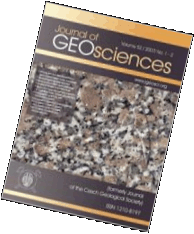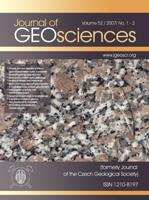 Export to Mendeley
Export to Mendeleycolumbite-tantalite
Moose II pegmatite
Nb-Ta chemical evolution
muscovite trace-element geochemistry
Yellowknife pegmatite field
Northwest Territories
Original Paper
A geological, geochemical and textural study of an LCT pegmatite: implications for the magmatic versus metasomatic origin of Nb-Ta mineralization in the Moose II pegmatite, Northwest Territories, Canada
Journal of Geosciences, volume 58 (2013), issue 4, 299 - 320
DOI: http://doi.org/10.3190/jgeosci.149
The internal zonation and chemical evolution of Nb-Ta oxides and muscovite have been characterized in the Moose II pegmatite, Northwest Territories, Canada, to distinguish primary magmatic mineralization from that formed during late-stage metasomatic processes. In addition, muscovite associated with Nb-Ta oxides was examined in order to assess the evolution of the pegmatite melt and the nature of the late-stage fluids.
Detailed mapping shows that the studied body (430 × 61 m) is a highly fractionated, irregularly zoned, spodumene-subtype rare-element pegmatite dominated by coarse-grained to megacrystic albite, K-feldspar, and spodumene, with intergranular assemblages of quartz, K-feldspar, albite, spodumene, muscovite, and minor amblygonite-montebrasite. Monomineralic core zones (quartz and amblygonite-montebrasite), aplitic albite ‘pods,’ and units characterized by phyllic alteration occur in the central portions of the pegmatite.
Columbite-tantalite minerals occur throughout the pegmatite, excluding the quartz cores, and patterns of internal zoning include: (1) normally zoned ferrocolumbite with early Ta-Ti-rich, and later Nb-W-rich overgrowths; (2) oscillatory zoned Ti-rich ferrotantalite with Nb-rich patchy replacement; (3) reversely zoned ferrocolumbite, with a Ta-rich cores and (4) complexly zoned Ti-rich ferrotantalite with abundant late Nb- and Ta- rich patches and sieve textures.
The textures and chemical patterns demonstrate an evolution from columbite to tantalite, whereby the Ta/(Ta + Nb) ratio increased with progressive fractionation (0.13-0.59) but the Mn/(Mn + Fe) ratio remained nearly constant (0.15-0.31). The chemical evolution of the Nb- Ta oxides from columbite to tantalite is consistent with crystallization from a magmatic to late-stage magmatic Na-rich melt, with a sequence of crystallization progressing from those of the wall zone, to the first intermediate zone, and finally the late aplitic albite zones. Minor remobilization of Nb, and to a lesser extent Ta, was responsible for some of the replacement features found in the Nb-Ta oxides. Textural observations and trace-element analyses of fine-grained, secondary muscovite found throughout the pegmatite indicate hydrothermal metasomatism by a late F- and Nb-rich vapor-like (“supercritical”) fluid.
Webdesign inspired by aTeo. Hosted at the server of the Institute of Petrology and Structural Geology, Charles University, Prague.
ISSN: 1803-1943 (online), 1802-6222 (print)
email: jgeosci(at)jgeosci.org


IF (WoS, 2022): 1.4
5 YEAR IF (WoS, 2022): 1.8
Policy: Open Access
ISSN: 1802-6222
E-ISSN: 1803-1943